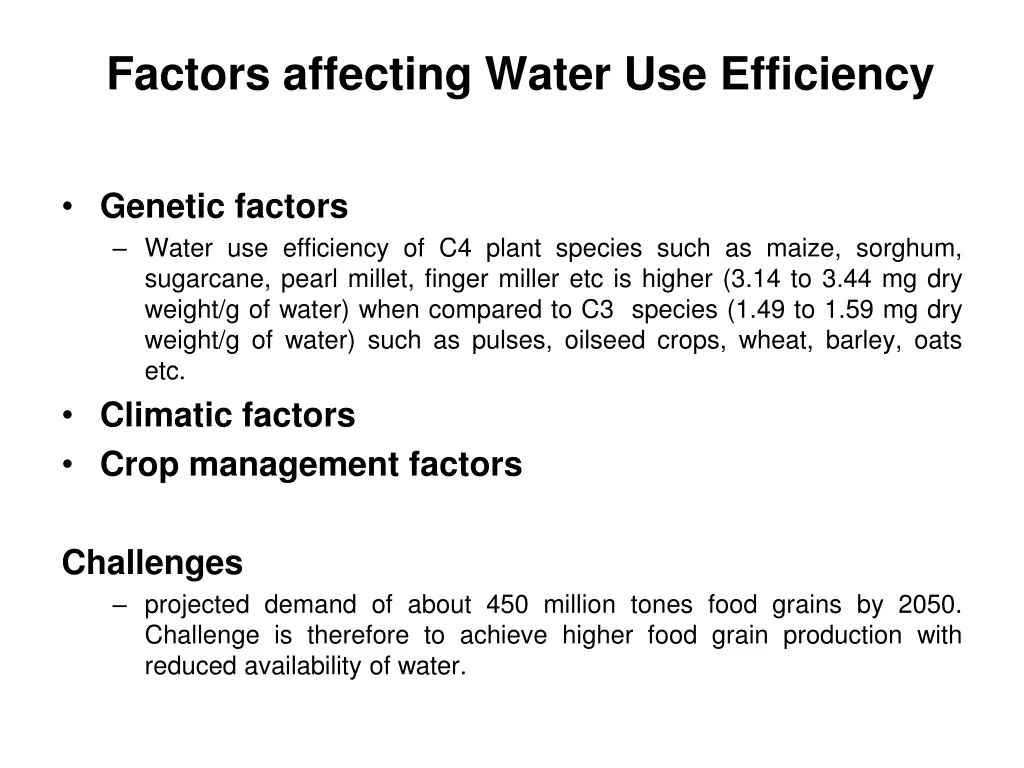
Unveiling the Secrets of Plant Resilience: Factors That Help Plants Thrive
Plants, the silent sentinels of our planet, often stand as testaments to nature’s enduring power. From the towering redwoods that have witnessed centuries of change to the humble weeds that stubbornly sprout through cracks in the pavement, plants demonstrate an incredible ability to withstand adversity. This inherent capacity to bounce back from environmental stressors, known as resilience, is a complex interplay of various factors. Understanding these factors is crucial, not only for appreciating the marvels of the natural world but also for informing sustainable agricultural practices, conservation efforts, and even our own well-being. In this comprehensive exploration, we’ll delve deep into the fascinating world of plant resilience, uncovering the key elements that allow plants to thrive in the face of challenges.
What is Plant Resilience? A Definition
Plant resilience can be defined as the ability of a plant to maintain its essential functions, such as growth, reproduction, and survival, under challenging environmental conditions. These challenges can encompass a wide range of stressors, including drought, extreme temperatures, pest infestations, diseases, nutrient deficiencies, and even physical damage. Resilience is not just about surviving; it’s about continuing to function effectively and potentially recovering to a pre-stress state. It’s a dynamic process, not a static trait, influenced by a plant’s genetic makeup, its environment, and the interactions between the two.
Think of a resilient plant as an athlete. They might get knocked down, but they get back up, adapt, and keep going. This ability to adapt is key to resilience. It’s about finding ways to cope with the punches life throws at you. In the plant world, this “coping” can manifest in various ways, from altering the way they grow to activating defense mechanisms.
Key Factors Influencing Plant Resilience
Plant resilience is a multifaceted phenomenon, with numerous factors contributing to its strength. These factors can be broadly categorized into genetic, environmental, and physiological components. Let’s explore each of these in detail:
1. Genetic Factors: The Blueprint for Resilience
A plant’s genetic makeup provides the foundational framework for its resilience. Specific genes encode proteins and pathways that are critical for stress response and adaptation. Think of it as the plant’s instruction manual, dictating how it will react to various challenges. The genetic diversity within a plant population also plays a vital role. A population with high genetic diversity is more likely to contain individuals with genes that confer resistance or tolerance to specific stressors. This is why biodiversity within a species is so important for its long-term survival.
- Gene Expression: Genes that control the production of stress-related proteins, such as heat shock proteins (HSPs) and antioxidant enzymes, are activated under stress.
- Genetic Variation: Differences in genes within a plant population can lead to varying levels of resilience to different stressors.
- Breeding Programs: Plant breeders can select and breed plants with desirable traits, such as increased drought tolerance or disease resistance, to improve resilience in crops.
2. Environmental Factors: The Context of Resilience
The environment in which a plant grows significantly impacts its resilience. Environmental conditions can either exacerbate or mitigate the effects of stress. Factors like climate, soil quality, and the presence of other organisms can all influence a plant’s ability to cope with adversity. A plant growing in a favorable environment, with adequate water, nutrients, and sunlight, is generally better equipped to withstand stress than one struggling in harsh conditions. The interplay between the environment and a plant’s genetic potential is crucial in determining its overall resilience.
- Climate: Temperature, rainfall patterns, and the frequency of extreme weather events significantly affect plant resilience.
- Soil Conditions: Soil texture, nutrient availability, and the presence of beneficial microorganisms all influence plant health and stress tolerance.
- Light Availability: Adequate sunlight is essential for photosynthesis, which fuels plant growth and provides energy for stress responses.
- Interactions with Other Organisms: Symbiotic relationships, such as those with mycorrhizal fungi, can enhance nutrient uptake and improve resilience to various stresses.
3. Physiological Factors: The Plant’s Internal Mechanisms
Beyond genetics and the environment, a plant’s internal workings, its physiology, play a critical role in its resilience. These physiological mechanisms are the plant’s frontline defense against stressors. They involve a complex network of biochemical and molecular processes that are activated when a plant perceives a threat. These include changes in metabolism, the production of protective compounds, and the regulation of water balance. These mechanisms are not always visible, but they are essential for the plant’s survival. Understanding these processes is key to improving crop yields and protecting natural ecosystems.
- Photosynthesis: The efficiency of photosynthesis is crucial for providing energy for growth and stress responses.
- Water Regulation: Maintaining proper water balance is essential, especially during drought. Plants employ various mechanisms to conserve water, such as closing stomata (pores on leaves).
- Nutrient Uptake: Efficient nutrient uptake is vital for plant health and stress resistance.
- Hormonal Regulation: Plant hormones, such as abscisic acid (ABA), play a key role in regulating stress responses.
- Production of Secondary Metabolites: Plants produce a wide array of secondary metabolites, such as antioxidants and defense compounds, that help them cope with stress.
Specific Examples of Plant Resilience in Action
The concept of plant resilience becomes even more compelling when we examine specific examples of how plants cope with different stressors. These examples demonstrate the remarkable adaptability of plants and the diverse strategies they employ to survive and thrive.
1. Drought Tolerance
Drought is a major threat to plant survival in many regions. Resilient plants have evolved various mechanisms to cope with water scarcity:
- Deep Root Systems: Some plants, like mesquite trees, develop extensive root systems to access water deep underground.
- Reduced Transpiration: Plants may close their stomata (pores on leaves) to reduce water loss through transpiration. They also may have waxy leaf coatings.
- Osmotic Adjustment: Plants can accumulate solutes in their cells to maintain turgor pressure and prevent dehydration.
- Dormancy: Some plants can enter a dormant state during drought, slowing down their metabolism until water becomes available.
2. Heat Tolerance
High temperatures can damage proteins and disrupt cellular processes. Heat-tolerant plants have developed strategies to mitigate these effects:
- Heat Shock Proteins (HSPs): Production of HSPs helps protect proteins from damage caused by high temperatures.
- Evaporative Cooling: Plants can cool themselves through transpiration, similar to how humans sweat.
- Leaf Morphology: Some plants have small, reflective leaves to reduce heat absorption.
3. Salt Tolerance
High salt concentrations in the soil can draw water out of plant cells, leading to dehydration. Salt-tolerant plants have developed mechanisms to:
- Salt Exclusion: Some plants can prevent salt from entering their roots.
- Salt Secretion: Others secrete salt through specialized glands on their leaves.
- Salt Accumulation: Some plants accumulate salt in their vacuoles, where it is less harmful.
4. Pest and Disease Resistance
Plants are constantly under attack from pests and diseases. Resilient plants employ various defense mechanisms:
- Physical Barriers: Thick cuticles, thorns, and trichomes (small hairs) can deter pests.
- Chemical Defenses: Plants produce a wide array of chemicals, such as toxins and repellents, to deter attackers.
- Induced Resistance: Plants can activate their defense systems in response to attack, producing defense compounds and strengthening cell walls.
- Symbiotic Relationships: Some plants have beneficial relationships with other organisms, such as mycorrhizal fungi, which can help protect them from diseases.
The Importance of Plant Resilience
Understanding and promoting plant resilience is vital for a variety of reasons, extending far beyond the simple survival of individual plants. The ability of plants to withstand environmental challenges has profound implications for ecosystems, agriculture, and even our own well-being.
1. Ecosystem Stability
Resilient plant communities are essential for maintaining the stability and function of ecosystems. When plants can withstand environmental stresses, they continue to provide habitat, food, and other resources for other organisms. This, in turn, supports biodiversity and ensures the overall health of the ecosystem. Resilient ecosystems are better equipped to cope with disturbances, such as climate change, and are more likely to recover from them. The resilience of plants is a cornerstone of ecological stability.
2. Food Security
In agriculture, plant resilience is critical for ensuring food security. Climate change, with its associated extreme weather events, poses a significant threat to crop production. Developing crop varieties with enhanced resilience to drought, heat, pests, and diseases is essential for maintaining yields and ensuring a stable food supply. This involves breeding programs, genetic engineering, and the implementation of sustainable agricultural practices that promote plant health and stress tolerance. Resilient crops are essential for feeding a growing global population. Without them, food shortages and price fluctuations can become more frequent.
3. Climate Change Mitigation and Adaptation
Plants play a crucial role in mitigating climate change by absorbing carbon dioxide from the atmosphere. Resilient plants, particularly in forests and other natural ecosystems, can contribute significantly to carbon sequestration. Furthermore, understanding plant resilience is key to adapting to the impacts of climate change. By identifying and promoting resilient plant species, we can help ecosystems and agricultural systems cope with the challenges posed by rising temperatures, altered precipitation patterns, and more frequent extreme weather events. The ability of plants to adapt and thrive will be a critical component of our global response to climate change.
4. Conservation Efforts
Protecting and restoring plant resilience is a central goal of conservation efforts. This involves protecting habitats, managing natural resources sustainably, and promoting biodiversity. By understanding the factors that contribute to plant resilience, we can develop effective strategies for conserving vulnerable plant species and restoring degraded ecosystems. This includes protecting genetic diversity, addressing threats like habitat loss and pollution, and implementing measures to mitigate the effects of climate change. Conserving plant resilience is essential for preserving the planet’s biodiversity and the vital ecosystem services that plants provide.
5. Human Health and Well-being
Plant resilience indirectly benefits human health and well-being in several ways. Resilient ecosystems provide clean air and water, regulate climate, and support food production. The discovery of medicinal compounds from plants has also contributed to human health. Moreover, exposure to nature and the appreciation of plant diversity have been shown to have positive effects on mental health. The health of plants and the health of humans are inextricably linked.
Strategies for Enhancing Plant Resilience
Given the importance of plant resilience, efforts are underway to enhance this crucial trait. These efforts involve a variety of approaches, ranging from traditional breeding techniques to cutting-edge biotechnological innovations.
1. Breeding for Resilience
Traditional plant breeding techniques remain a cornerstone of enhancing plant resilience. Plant breeders select and cross-breed plants with desirable traits, such as drought tolerance or disease resistance, to create new varieties with improved resilience. This process involves carefully selecting parent plants, crossing them, and then selecting offspring that exhibit the desired characteristics. This is a time-consuming process, but it’s a proven method for improving plant resilience and adapting crops to changing environmental conditions.
2. Genetic Engineering and Biotechnology
Genetic engineering and biotechnology offer more rapid and precise methods for enhancing plant resilience. Scientists can identify and insert specific genes that confer stress resistance into plants. This allows for the development of crops with enhanced tolerance to drought, pests, diseases, and other environmental challenges. While this technology has generated some controversy, it offers promising solutions for improving crop yields and ensuring food security in the face of climate change and other challenges. Gene editing technologies, such as CRISPR, are further revolutionizing this field, allowing for even more targeted and efficient modifications to plant genomes.
3. Sustainable Agricultural Practices
Sustainable agricultural practices play a crucial role in promoting plant resilience. These practices include:
- Crop Rotation: Rotating crops can help to break pest and disease cycles and improve soil health.
- Cover Cropping: Planting cover crops can improve soil fertility, reduce erosion, and suppress weeds.
- No-Till Farming: No-till farming practices minimize soil disturbance, which can improve water infiltration and reduce erosion.
- Integrated Pest Management (IPM): IPM strategies use a combination of methods to control pests and diseases, minimizing the use of pesticides.
- Water Conservation: Efficient irrigation techniques can help conserve water and reduce the impact of drought.
4. Conservation of Biodiversity
Protecting and promoting biodiversity is essential for enhancing plant resilience. Biodiversity provides a wider range of genetic resources, increasing the likelihood of finding plants with desirable traits. Conservation efforts include:
- Protecting Habitats: Protecting natural habitats from destruction and degradation is essential for preserving plant diversity.
- Establishing Protected Areas: National parks, reserves, and other protected areas provide safe havens for plant populations.
- Seed Banks: Seed banks store seeds from a wide variety of plant species, providing a valuable resource for future breeding and conservation efforts.
- Restoration of Degraded Ecosystems: Restoring degraded ecosystems can help to promote plant diversity and enhance ecosystem resilience.
Conclusion: Cultivating a Resilient Future
Plant resilience is a complex and fascinating phenomenon that is essential for the health of our planet and the well-being of humanity. By understanding the factors that influence plant resilience, we can take steps to promote it, from developing resilient crop varieties to protecting and restoring natural ecosystems. As we face the challenges of climate change and other environmental threats, the ability of plants to withstand adversity will become even more critical. By embracing sustainable practices, investing in research, and promoting conservation efforts, we can cultivate a more resilient future for both plants and ourselves. The future of our planet depends on it.


